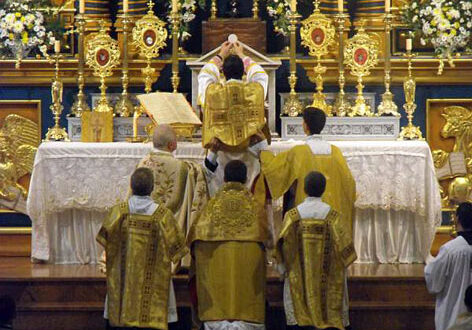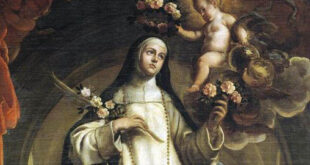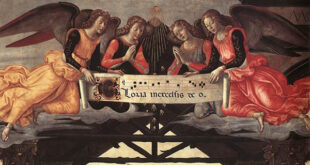The Tridentine Mass, also known as the Traditional Latin Rite, has been for centuries a profound expression of the Catholic faith. With its roots in apostolic tradition and liturgical development throughout the ages, this form of celebrating the Eucharist was codified by Pope St. Pius V after the Council of Trent in the 16th century, which is why it is referred to as “Tridentine.” For many of the faithful, this rite has been considered a bridge to the sacred, a unique way of experiencing the reverence, mystery, and solemnity that accompany the central act of Christian life: the Eucharistic sacrifice.
In recent decades, the Tridentine Mass has seen a notable resurgence. Although the Second Vatican Council introduced the ordinary form of the Mass in the vernacular in 1970, many Catholics have found in the extraordinary form (a name used for the Tridentine Mass after Pope Benedict XVI’s 2007 motu proprio Summorum Pontificum) a source of spiritual enrichment and a deeper connection to the Church’s tradition. In this article, we will explore the history, theological significance, and practical applications of the Tridentine Mass, as well as reflect on how this rite can illuminate and transform the spiritual life of Catholics today.
History of the Tridentine Mass
Ancient Roots and Evolution
While the term “Tridentine Mass” refers to the liturgical codification of the 16th century, the roots of this Mass go back to the early centuries of Christianity. The celebration of the Eucharist has always been central to Christian life, and from apostolic times, the development of the liturgy was influenced by both oral tradition and Scripture.
During the first centuries, the basic structure of the Mass remained consistent: the proclamation of the Word of God, the homily, the prayers of the faithful, the offertory, the consecration, and communion. However, the detailed development of the prayers and ceremonies evolved gradually, particularly in great apostolic sees such as Rome, Jerusalem, Antioch, and Alexandria.
Over time, the Roman Rite, which was centered in Rome, began to prevail over other liturgical forms in the West. This rite, with a particular emphasis on the dignity and solemnity of the Eucharistic sacrifice, was shaped by the contributions of great saints and popes, such as St. Gregory the Great in the 6th century, who played a crucial role in unifying and standardizing the liturgy.
The Council of Trent and Codification
The Council of Trent (1545-1563) was the Catholic Church’s response to the Protestant Reformation. The reformers questioned many aspects of Catholic faith, including the nature of the Mass as a sacrifice. In response, the Council of Trent reaffirmed the doctrine of the Mass as the unbloody sacrifice of Christ, perpetuated on the altar. To protect the purity of the liturgy, Pope St. Pius V in 1570 promulgated the Roman Missal, which codified the Mass in its form known as Tridentine, mandating its use throughout the Latin Church, with some exceptions for rites that had existed for over 200 years.
This Tridentine Mass was the form of celebration used across the Catholic world until the liturgical reforms of the Second Vatican Council in the 1960s. Although the Council did not abolish the use of Latin or the traditional form, the reformed Missal promulgated by Pope Paul VI in 1970 became the predominant form, celebrated in the vernacular.
Resurgence and Modern Appreciation
Despite the introduction of the new Mass or Novus Ordo, many faithful maintained a deep devotion to the Tridentine Mass. In 1984, Pope John Paul II granted special permissions for its celebration, and in 2007, Pope Benedict XVI, through the motu proprio Summorum Pontificum, reaffirmed that the Tridentine Mass had never been abolished and that any priest could celebrate it without special permission.
This motu proprio led to a significant resurgence of the rite, especially among the young and those seeking a more traditional form of prayer and spirituality. Today, the Tridentine Mass continues to be a source of grace for many Catholics, providing them with a profound connection to tradition and the sense of the sacred.
Theological Relevance of the Tridentine Mass
The Tridentine Mass is not simply a relic of the past but a living, vibrant expression of Catholic theology. In its form and structure, this Mass highlights several key theological elements that help us better understand the mystery of faith.
1. The Sacrifice of Christ on the Altar
One of the most important aspects of the Tridentine Mass is its emphasis on sacrifice. Unlike some modern liturgical forms where the focus might seem more centered on the community, the Tridentine Mass places a strong emphasis on the Mass as the unbloody renewal of the sacrifice of Calvary. The prayers and gestures, from the offertory to the consecration, are directed toward this central act: the offering of Christ’s Body and Blood to the Father for the salvation of the world.
This focus helps the faithful remember that the Mass is not merely a banquet or a gathering of the community but a true sacrifice. The altar becomes the place where Christ, the slain Lamb, offers Himself once more, though in an unbloody manner, for the forgiveness of sins.
2. Mystery and Reverence
The Tridentine Mass is imbued with a profound sense of reverence and mystery. The use of Latin, a sacred language employed by the Church for centuries, helps separate what happens in the Mass from everyday life. It is not simply an ordinary conversation between the faithful and God, but a sacred act, an elevation of the human to the divine.
The gestures, postures, and prayers are carefully designed to express the grandeur of what takes place at the altar. The priest, acting in persona Christi (in the person of Christ), faces the orient (toward the East or toward God) during many parts of the Mass, leading the congregation in the offering of the sacrifice. This underscores that the Mass is not merely a horizontal dialogue between the priest and the people but an offering directed to God.
3. The Beauty of the Liturgy
The Tridentine Mass is also marked by its extraordinary liturgical beauty. Gregorian chant, sacred vestments, incense, and precise, solemn gestures are all designed to elevate the heart and mind toward God. This beauty is not superficial but reflects the transcendent beauty of God Himself. The liturgy teaches us that in worship, we are called to offer the best of ourselves to God, including our talents and creativity.
Practical Applications of the Tridentine Mass in Spiritual Life
How can the Tridentine Mass transform the lives of the faithful today? Below are some reflections on how to apply the elements of this liturgical form to our daily lives:
1. Silence and Contemplation
In a world filled with noise and distraction, the Tridentine Mass offers a space for contemplation and silence. Many parts of the Mass, especially the Canon, are prayed silently by the priest. This silence invites the faithful to a deeper and more interior participation in the mystery of the Mass. In our daily lives, we can learn from this silence, seeking moments for quiet prayer and personal reflection, withdrawing from the noise of modern life to listen to God’s voice.
2. Reverence and Respect
The Tridentine Mass teaches us reverence in our relationship with God. From the way we kneel to how we receive the Eucharist, every gesture in the Mass is filled with respect. This respect for the sacred can be carried into our daily lives, reminding us to treat everything around us—from our neighbors to the environment—with reverence and respect, knowing that all has been created by God.
3. The Centrality of Sacrifice
The sacrificial focus of the Tridentine Mass reminds us that the Christian life is, at its core, a life of sacrifice. Just as Christ offers Himself in every Mass, we are also called to offer our lives, our joys, sufferings, work, and prayers, as a spiritual sacrifice to God. In our daily lives, this translates into a willingness to give to others, to serve without expecting anything in return, and to offer our difficulties as an offering united with Christ’s Cross.
Conclusion: A Path to the Sacred
The Tridentine Mass, with its rich history, deep theology, and liturgical beauty, remains a beacon of light in the lives of many Catholics. In a world that often values the immediate and the superficial, this traditional form of the Mass invites us to immerse ourselves in the mystery of the eternal and transcendent. It reminds us that the Catholic faith is not something experienced only at a superficial level but is a profound encounter with the sacred.
Whether or not you regularly attend the Tridentine Mass, this form of celebration can offer valuable lessons on how to live our faith with greater reverence, contemplation, and sacrificial commitment. Ultimately, what is celebrated on the altar is not just an ancient rite but the renewal of Christ’s redemptive sacrifice—a mystery that transforms us and compels us to bring His presence to the world.
May the Tridentine Mass continue to be a source of inspiration and a guide for all those who seek to deepen their spiritual lives and live more fully the mystery of the Catholic faith.






